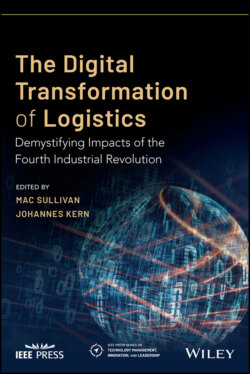Читать книгу The Digital Transformation of Logistics - Группа авторов - Страница 84
Outsourcing Versus Automation
ОглавлениеImproving operational excellence to drive down internal costs takes a concerted effort and has typically fallen behind increasing revenue in the logistics industry. Attempting to lower costs through tightening operational expenses by looking to leverage technology to promote efficiency is nothing new and there is a lot of room for improvement left as many companies still have inefficient processes (Penttinen et al. 2018). Since the First Industrial Revolution, companies have been streamlining processes and segmenting work. However, the definition of work itself is changing as it did during that period of time when workers moved from the farm to the factory. The role and creation of a logistics service provider is an area where manufacturers and trading companies have been increasingly outsourcing their logistics department since the 1990s (Sohail and Sohal 2003). The obvious value that an automated solution would offer is that robots are not affected by the mental, physical, and environmental constraints of a human worker (Adams 2002). Robots are a sustainable solution if properly funded and implemented.
Funding is an area in which automation has been falling short in the past as many companies did not have the scale to outlay large capital expenditures and later recoup this investment. Things may be changing though as the cost to automate is consistently decreasing and technologies like RPA are becoming more available. A 2016 research report by Deloitte states that the cost of running a bot was most often cheaper than offshoring (Frank 2015). Slaby (2012) echoes this sentiment stating that RPA is a threat to BPO companies who have a singular value proposition of providing a lower cost labor force. If this statement holds up, there would be much higher utilization of RPA bots to perform tasks that are currently executed by numerous human labor in outsourcing locations. Defining processes and creating the proper documentation to hand over a task are very similar whether dealing with a human or a bot. Whoever will be doing the task in a new scenario, there is a need to create extensive contingency plans that requires a large amount of time to ensure that all scenarios have been carefully thought out. This is where tasks that have very little variability are preferred in outsourcing or automating as the number of scenarios would be less. Once again, the decision to step back from the daily activities of troubleshooting and temporarily putting stakeholder demands aside to dedicate resources to process mapping becomes a formidable challenge for logistics executives to address.
